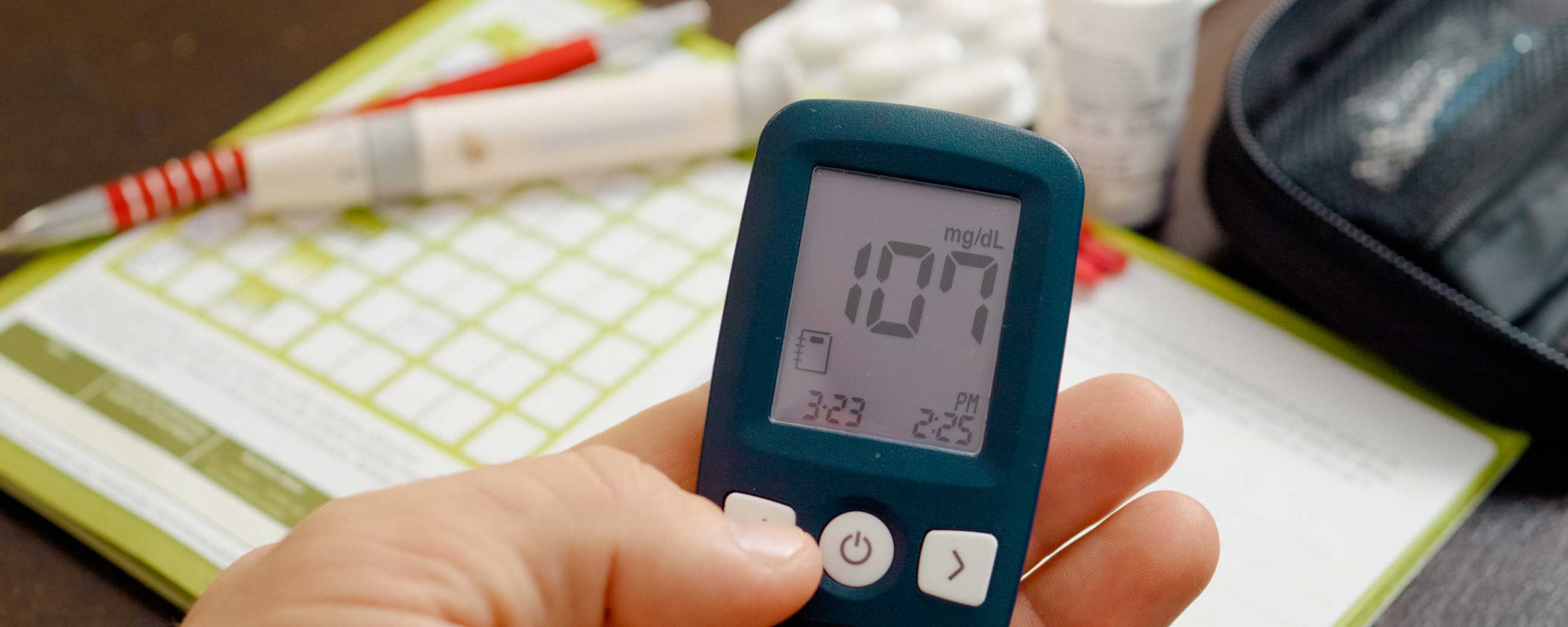
Why Most New Year’s Health Resolutions Fail—And How You Can Beat The Odds

For millions of Americans, the start of a new year means finally starting their New Year’s resolution. A 2017 survey of 1,129 American adults revealed that 41% usually make a New Year’s resolution.¹ That means 100 million Americans are poised to make or start New Year’s resolutions.
To understand the most common resolutions, we reviewed survey, search, and social media data from multiple different sources (see our methods section below). The most common resolutions are related to improving physical health, specifically through weight loss, a healthier diet, and exercising more.¹,³,⁴,⁵,⁶ More than 50% of people are including a healthier diet, more exercise, or weight loss as part of their overall set of resolutions.³ This means that you are more likely than not to make one of your New Year’s resolutions changing your diet or exercising more in the pursuit of being healthier, and most likely in an attempt to lose weight.
The most common resolutions are to lose weight, eat healthier, and exercise more—and most fail to achieve their resolution.
The top 3 failed New Year's resolutions are:
- Diet or eat healthier (54% failed)
- Exercise more (44% failed)
- Lose weight (41% failed)
People fail significantly more frequently with weight resolutions than with non-weight-loss resolutions.² That doesn’t mean that it’s not worth making a resolution at all, though. Making a firm resolution leads to more success than just having a tentative goal or non-committal desire,² with one survey reporting that people who explicitly make resolutions are 10 times more likely to attain their goals than people who don't explicitly make resolutions.¹ While improving physical health is a common resolution among many of us, it also turns out to be a common failure.
Resolutions only really matter if you actually stick with them—but unfortunately, most people don’t achieve their resolutions.
See footnote 2 for the detailed analysis of these data.
How to beat the odds and succeed at your health goals
Why do people fail at their health goals? The answer to this question is complex, and not well-studied. Some sources will point to a lack of willpower or motivation. Two surveys³,⁴ found that over 50% of respondents claiming the combination of lack of commitment, motivation, and willpower caused them to fail their resolution. We think that misses the point. At the beginning of the year, when you first make a resolution, most people feel very high levels of motivation—that’s why they are making a resolution in the first place! The more interesting question is—what is causing this steady loss of motivation over time? Our best guess is that while most people pick resolutions that they sincerely want to achieve, the methods they pick to go about achieving them are flawed. Just because you want to lose weight, eat healthier, or exercise more does not mean that you know the best way to accomplish the individual steps needed to make and maintain these new habits.
#1. Pick methods to achieve your goals that are proven to work
Many experts disagree on the most effective methods for losing weight. That’s why figuring out what works for weight loss, and what you can stick with, is challenging. It’s easy to find multiple studies, even review articles and meta-analyses, that claim opposite perspectives. One meta-analysis will claim that exercise is an effective method for weight loss,⁹ and then another review article will demonstrate that exercise of all sorts, including aerobic training, resistance training, combination training, and pedometer step goals, does not prove to be an effective method for weight loss,⁸ and at best, provide modest weight loss—around 2 kg (4.4 pounds) in a year.⁸ People have been trying to “eat less, exercise more” for years, but many people don’t see long-term results with this tactic.¹⁰
The lack of consistent data, and the fact that dietary and exercise preferences vary widely between individuals, means that we can’t tell you which diet or exercise program is best for YOU to lose weight.
The best plan for losing weight is one that is personalized to you—your body, your preferences, and your unique biochemistry.
#2. Do something you can stick with long-term
Many people pick whatever methods are common or fashionable (as they are top of mind) or most extreme (promising fast results). This leads to negative feedback cycles—you try your best to perform the tasks you think are necessary to achieve your goal, but the tasks are difficult to maintain and make habits of, and worse, you barely see any improvement. Very few people can stick with repeating difficult tasks with low payouts—the sensible thing to do in these situations is typically to quit!
Don’t pick methods that you don’t at least like a little bit, because you won’t stick with them. Focus on making the necessary changes enjoyable, and you will be much more likely to stick with them.One last bit of study data—when asked what “would help you keep your New Year's resolution to do with your health and wellbeing,” the top 5 answers⁴ were:
- Keeping my resolution with someone else (27%)
- Having a step-by-step guide on what to do (17%)
- Having access to health information and advice relevant to my resolution (15%)
- Setting my resolution in advance (13%)
- Having an expert coach (12%)
Virta provides all of the above. You can learn more here.
Methods:
To understand the most common resolutions, we found survey data from multiple different sources. Survey data, while limited in sample size (n), was the most direct data we could find. We did find some less direct but higher sample size data analyses of Twitter posts and Google searches. It is important to note that all of this data on the most common resolutions is not peer-reviewed or published in academic journals—so take it with a grain of salt, the way you would a political poll. At the time of publication, we could not find a peer-reviewed study on the frequency of different categories of New Year’s resolutions.
You can read a more detailed analysis of the data we found in footnote 1.
Footnote 1:
- The Statistics Brain 2017 survey of 1,129 American adults¹ found that the top category was “lose weight/healthier eating” at 21.4% of resolutions. For comparison, the next closest category was “life/self improvements” at 12.3%—so weight loss and healthier eating were by far the leading resolution in this survey.
- In Elliptical Reviews’ 2017 survey of 2,000 Americans,³ the top three New Year’s resolutions were “diet or eat healthier” (71%), “exercise more” (65%), and “lose weight” (54%). Note that in this survey, respondents were allowed to pick multiple resolutions, hence the percentages will add up to more than 100%. The next closest resolution was “save more and spend less” (32%)—again diet, exercise, and weight loss were leading the rankings by a wide margin, nearly doubling the next highest category in terms of frequency.
- The ComRes 2015 survey of 2,014 British adults⁴ revealed that the leading categories were “losing weight” (38%), “exercising more” (38%), and “eating more healthy” (30%). Note that in this survey, respondents were allowed to pick up to three resolutions, hence the percentages will add up to more than 100%. As before, the next highest category “taking a more active approach to my health” (15%) demonstrated about half the frequency of the leading weight/exercise/diet categories.
- A Twitter analysis done in early 2017⁵ pulled 20,000 tweets through the Twitter search API that contained the phrase “new years resolution”, then used string matching to classify 5,125 tweets into categories. Yet again, “physical health” defined as “being healthy, exercising and getting fit, and giving up smoking or alcohol” lead the pack with 2,071 tweets (40%), with the next closest category of “relationships” only showing 955 tweet, or about half that frequency (19%).
- A 2016 iQuanti analysis of Google search terms relating to new years resolutions⁶ showed that “get healthy” was the leading category, at 62,776,640 searches out of 159,031,920 (39%). And you guessed it—yet again, the next highest category, which was “get organized” only showed about half the same search volume, at 33,230,420 searches (21%).
Footnote 2:
- The Statistics Brain 2017 survey of 1,129 American adults¹ found that only 9.2% of resolvers successfully achieved their resolution last year, and that 42.4% never succeed and fail on resolution every year. 72.6% of resolvers maintain resolution through first week, but only 58.4% get through 1 month, and 44.8% get through 6 months
- In Elliptical Reviews’ 2017 survey of 2,000 Americans³ found that the top three failed New Year's resolutions were diet or eat healthier (54%), exercise more (44%), and lose weight (41%). Note that in this survey, respondents were allowed to pick multiple resolutions, hence the percentages will add up to more than 100%. 13% never even start their resolution.
- The ComRes 2015 survey of 2,014 British adults⁴ revealed that 43% of resolvers give up in the first few weeks, 66% at the 1 month mark, and 80% by the 3 month mark.
- Norcoss et. al followed New Year's resolvers (n = 159) and comparable nonresolvers interested in changing a problem later (n = 123) for six months via telephone interviews to determine their self-reported outcomes, predictors of success, and change processes. In resolvers, about 30% of people are already failing by the first week, and more than 50% by month six²—and the numbers are significantly worse for non-resolvers.
This blog is intended for informational purposes only and is not meant to be a substitute for professional medical advice, diagnosis, or treatment. Always seek the advice of your physician or other qualified health provider with any questions you may have regarding a medical condition or any advice relating to your health. View full disclaimer
Are you living with type 2 diabetes, prediabetes, or unwanted weight?

- https://www.statisticbrain.com/new-years-resolution-statistics/
- Norcross et al. “Auld lang syne: success predictors, change processes, and self-reported outcomes of New Year's resolvers and nonresolvers”. J Clin Psychol. 2002 Apr;58(4):397-405.
- https://www.ellipticalreviews.com/new-years-resolutions/
- http://www.comresglobal.com/wp-content/uploads/2015/12/BUPA_NY-Resolution_Public-Polling_Nov-15_UPDATED-TABLES.pdf
- http://t-redactyl.io/blog/2017/01/how-do-we-feel-about-new-years-resolutions-according-to-sentiment-analysis.html
- https://www.nbcnews.com/business/consumer/2017-new-year-s-resolutions-most-popular-how-stick-them-n701891
- https://www.niddk.nih.gov/health-information/health-statistics/overweight-obesity
- Swift et al. “The Role of Exercise and Physical Activity in Weight Loss and Maintenance”. Prog Cardiovasc Dis. 2014 Jan-Feb; 56(4): 441–447. Published online 2013 Oct 11. doi: 10.1016/j.pcad.2013.09.012.
- Clark, James E “Diet, exercise or diet with exercise: comparing the effectiveness of treatment options for weight-loss and changes in fitness for adults (18–65 years old) who are overfat, or obese; systematic review and meta-analysis”. J Diabetes Metab Disord. 2015; 14: 31. Published online 2015 Apr 17. doi: 10.1186/s40200-015-0154-1
- Fothergill E, Guo J, Howard L, Kerns JC, Knuth ND, Brychta R, Chen KY, Skarulis MC, Walter M, Walter PJ, Hall KD. Persistent metabolic adaptation 6 years after “The Biggest Loser” competition. Obesity (Silver Spring). 2016 May 2. doi: 10.1002/oby.21538.
- McKenzie AL, Hallberg SJ, Creighton BC, Volk BM, Link TM, Abner MK, Glon RM, McCarter JP, Volek JS, Phinney SD. A Novel Intervention Including Individualized Nutritional Recommendations Reduces Hemoglobin A1c Level, Medication Use, and Weight in Type 2 Diabetes. JMIR Diabetes. 2017;2(1):e5
- http://blog.virtahealth.com/from-initial-success-to-sustainability-in-diabetes-reversal-a-snapshot-of-six-month-outcomes/







